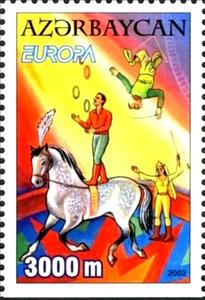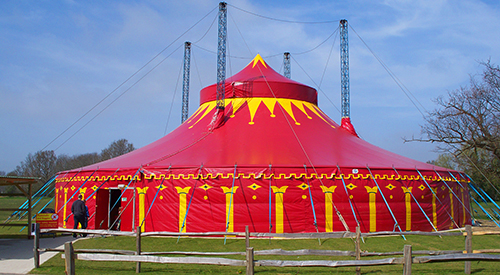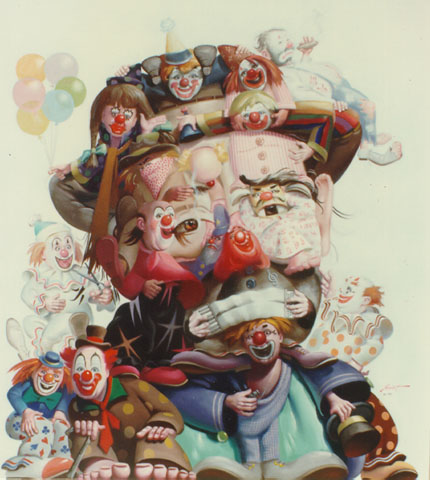Stamp: Juggler and acrobats (Azerbaijan 2002)
Juggler and acrobats (Azerbaijan 2002)
11 March (Azerbaijan ) within release Europa (C.E.P.T.) 2002 - Circus goes into circulation Stamp Juggler and acrobats face value 3,000 Azerbaijani manat
| Stamp Juggler and acrobats in catalogues | |
|---|---|
| Michel: | Mi: AZ 514D |
Stamp is vertical format.
Also in the issue Europa (C.E.P.T.) 2002 - Circus:
- Stamp - Juggler and acrobats face value 3,000;
- Stamp - Rope-walker, strong men and clowns face value 1,000;
- Booklet Pane - Europa 2002. Circus - half sheet face value 8,000;
- Stamp - Juggler and acrobats face value 3,000;
- Stamp - Rope-walker, strong men and clowns face value 1,000;
Stamp Juggler and acrobats it reflects the thematic directions:
A circus is a company of performers who put on diverse entertainment shows that may include clowns, acrobats, trained animals, trapeze acts, musicians, dancers, hoopers, tightrope walkers, jugglers, magicians, ventriloquists, and unicyclists as well as other object manipulation and stunt-oriented artists. The term circus also describes the field of performance, training and community which has followed various formats through its 250-year modern history. Although not the inventor of the medium, Newcastle-under-Lyme born Philip Astley is credited as the father of the modern circus.
A clown is a person who performs comedy and arts in a state of open-mindedness using physical comedy, typically while wearing distinct makeup or costuming and reversing folkway-norms. The art of performing as a clown is known as clowning or buffoonery, and the term "clown" may be used synonymously with predecessors like jester, buffoon, joker, fool, or harlequin. Clowns have a diverse tradition with significant variations in costume and performance. The most recognisable clowns are those that commonly perform in the circus, characterized by colorful wigs, red noses, and oversized shoes. However, clowns have also played roles in theater and folklore, like the court jesters of the Middle Ages and the jesters and ritual clowns of various indigenous cultures. Their performances can elicit a range of emotions, from humor and laughter to fear and discomfort, reflecting complex societal and psychological dimensions. Through the centuries, clowns have continued to play significant roles in society, evolving alongside changing cultural norms and artistic expressions.
A musical instrument is a device created or adapted to make musical sounds. In principle, any object that produces sound can be considered a musical instrument—it is through purpose that the object becomes a musical instrument. A person who plays a musical instrument is known as an instrumentalist. The history of musical instruments dates to the beginnings of human culture. Early musical instruments may have been used for rituals, such as a horn to signal success on the hunt, or a drum in a religious ceremony. Cultures eventually developed composition and performance of melodies for entertainment. Musical instruments evolved in step with changing applications and technologies.


